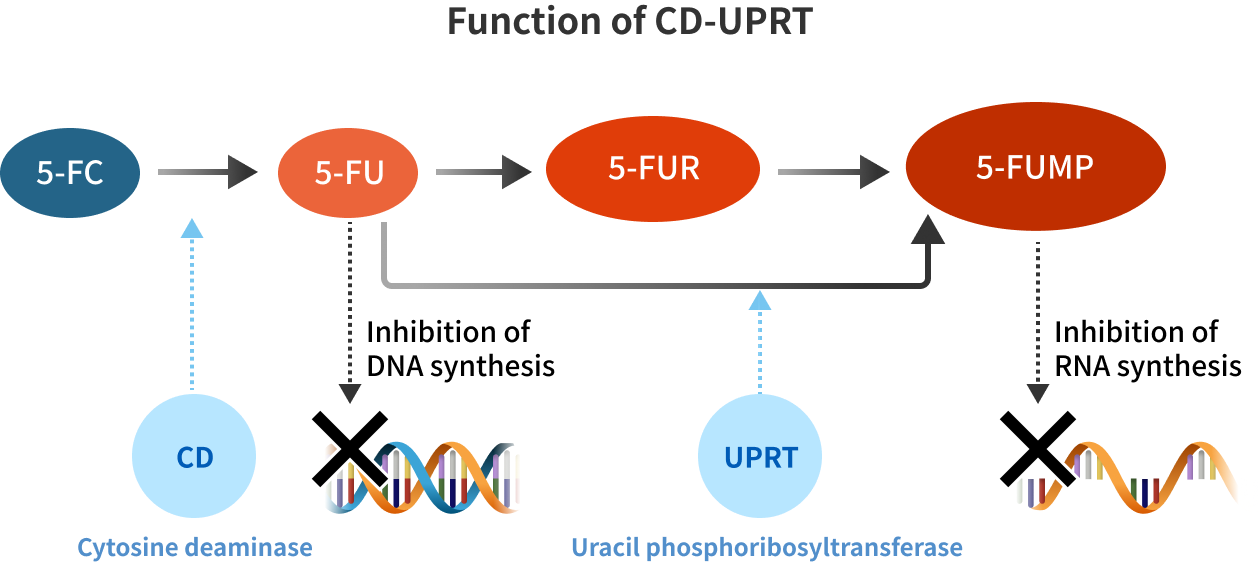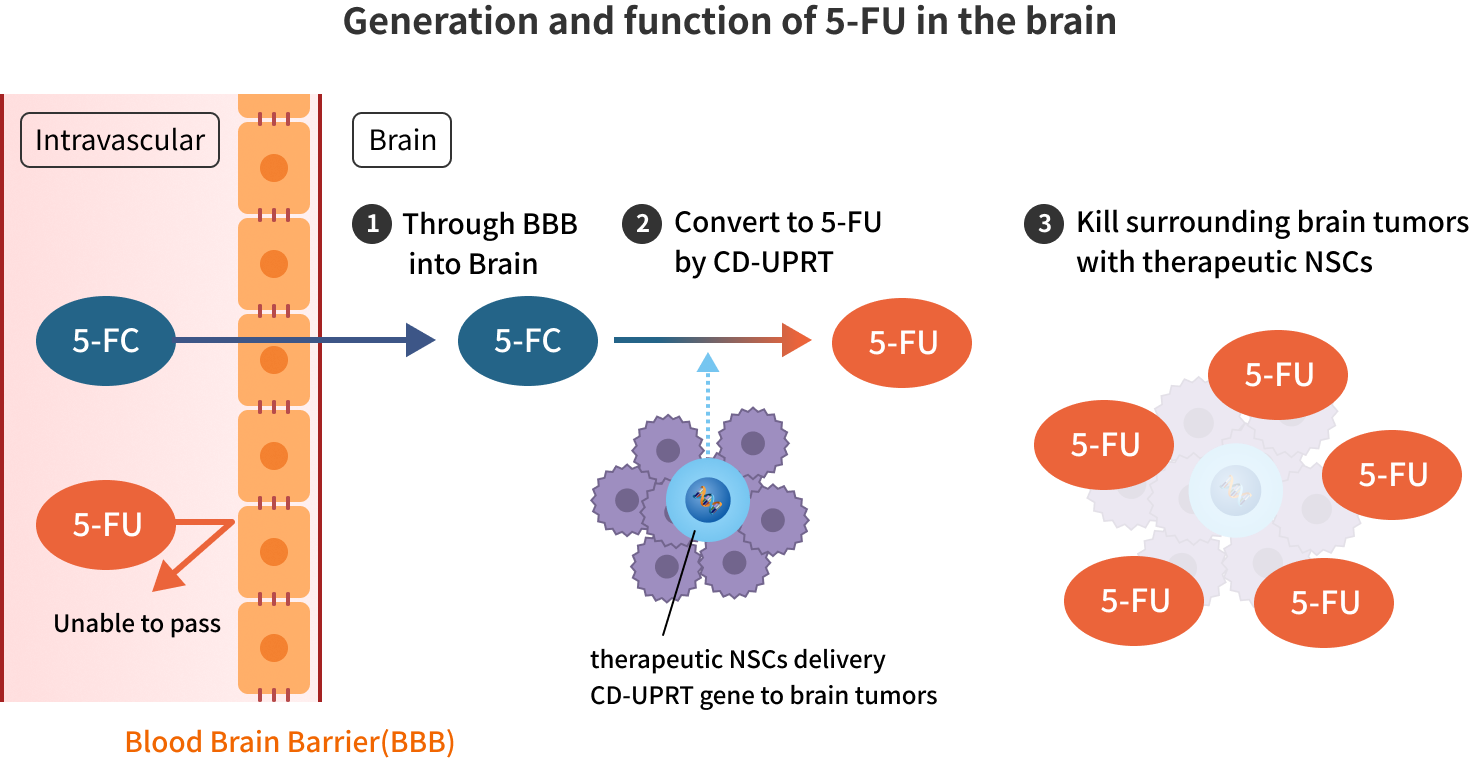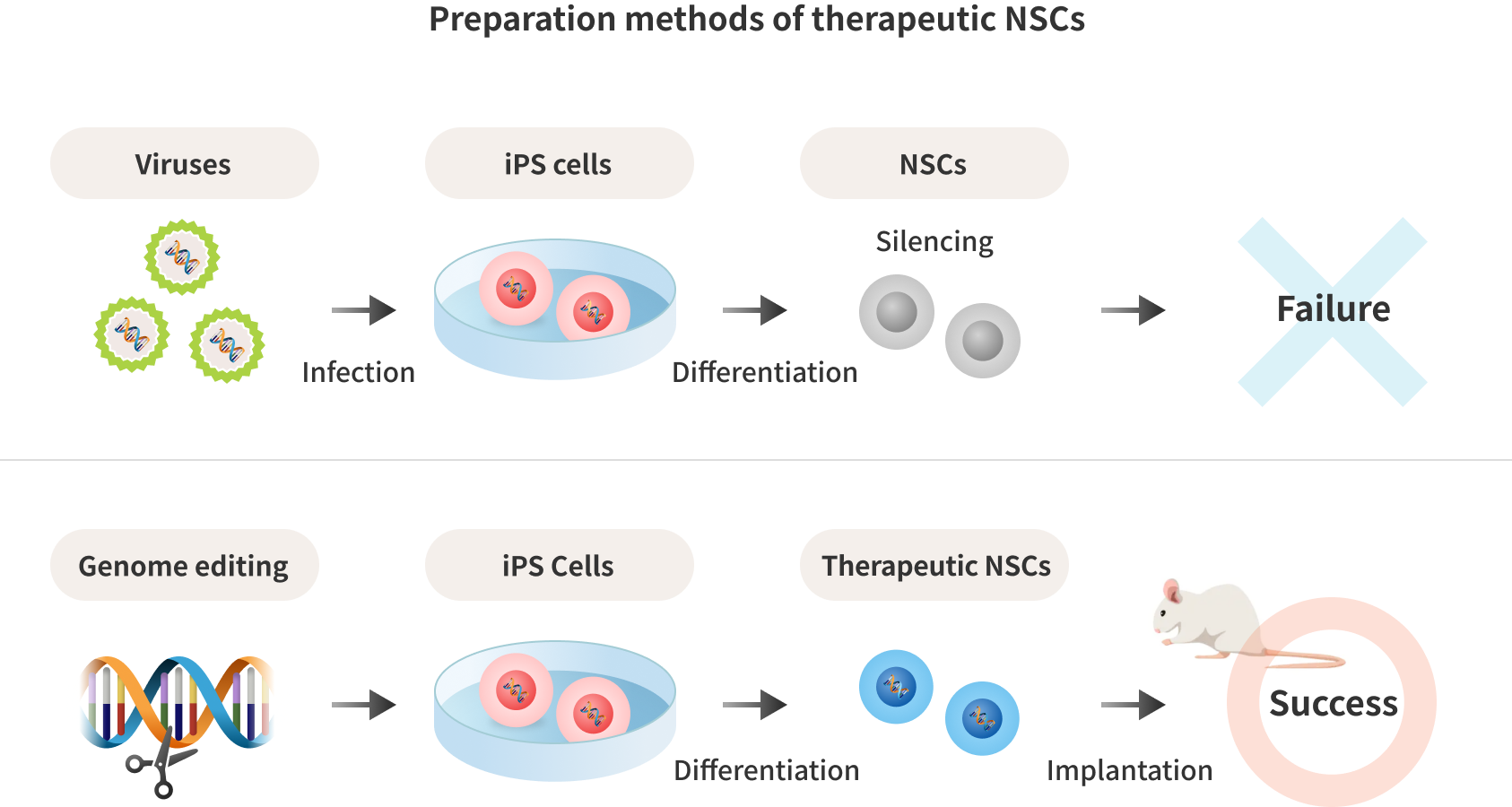Novel therapies using genome-edited iPS cells
Background of Development
Professor Toda as a founding member of iXgene and his research team at the Department of Neurosurgery, Keio University School of Medicine discovered a finding that neural stem cells migrate toward brain tumors in the mouse brain. Based on this finding, they thought that neural stem cells might be useful for ex vivo gene therapy for brain tumors if they were used as carriers of therapeutic genes, and they were developing a novel gene-cell therapy method.
The research team focused on the CD-UPRT fusion gene, which converts 5-FC, an antifungal drug, into 5-FU, an anticancer drug, and dramatically increases its effectiveness. While 5-FU, an anticancer drug, does not pass through the blood-brain barrier (BBB) to reach the brain when administered, 5-FC can pass through the BBB, allowing 5-FU to be produced only in the brain where the CD-UPRT gene is located. In other words, by introducing the therapeutic gene CD-UPRT into neural stem cells that migrate and accumulate at the brain tumor site, a high concentration of the anticancer drug 5-FU can be generated only at the brain tumor site, and the surrounding tumor can be killed together with the implanted therapeutic cells.


Furthermore, considering future clinical applications, the research team proceeded with a study to induce the differentiation of induced pluripotent stem (iPS) cells into therapeutic neural stem cells by incorporating therapeutic genes into iPS cells that can be produced in large and stable quantities. However, when introducing the CD-UPRT fusion gene into iPS cells using methods such as viral vectors, genes are randomly inserted into the iPS cell genome, leading to potential impacts on the iPS cells themselves or silencing the introduced genes. Therefore, by utilizing genome editing technology to specifically introduce therapeutic genes into certain gene loci, the team successfully created therapeutic cells (therapeutic NSCs) with stable gene expression in iPS cells. This achievement provided a clear path towards commercialization, leading to the establishment of iXgene.

Novel therapies using genome-edited iPS cells
Using these technologies established by Professor Toda and his team, we are developing chemotherapy for malignant brain tumors and regenerative medicine for brain dysfunction.
-
01Chemotherapy for Malignant Brain Tumors Using Genome-Edited iPS CellsThis is a novel gene-cell therapy that uses the migration ability of neural stem cells (NSCs) to malignant brain tumors to deliver therapeutic genes to the vicinity of malignant brain tumors. When the implanted therapeutic NSCs reach the malignant brain tumor and then prodrug is administered, the therapeutic NSCs generate a local high concentration of anticancer drug, which kills the malignant brain tumor.
-
02Regenerative Medicine for Brain Dysfunction Using Genome-Edited iPS CellsThis is a regenerative medicine that utilizes the inherent regenerative function of neural stem cells. Therapeutic NSCs transplanted into the brain are expected to migrate to the damaged area caused by traumatic brain injury or cerebral infarction and regenerate the damaged area. In addition, these NSCs contain the CD-UPRT gene, and even if the transplanted cells should become tumors, they can be eliminated by prodrug administration.
